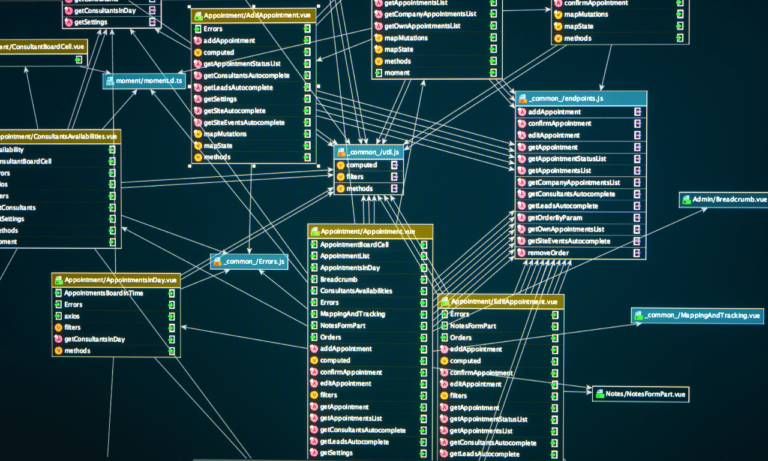Phone:
(+65)8319-0742
The landscape of modern education continues to evolve and with it, the emphasis on fostering Learner Independence in Education is growing. To truly empower our students, we must encourage and nurture student autonomy â allowing learners to steer their educational journey, set their goals, and personal aspirations. With the integration of self-directed learning philosophies into our educational strategies, we can provide a platform for students to not only excel academically but to become lifelong learners with the ability to navigate the complexities of an ever-changing world.
Key Takeaways
- Empowering students through learner independence caters to personalized educational experiences.
- Student autonomy leads to self-regulation, a critical component of self-directed learning.
- Implementing educational strategies aimed at independence prepares students for real-world challenges.
- Strengthening self-directed learning capabilities enhances motivation and academic engagement.
- Learner Independence in Education supports the development of confident, creative, and capable individuals.
Understanding the Essence of Learner Independence
At its core, learner independence in modern education systems circulates around the concepts of independent study, individualized learning, and self-regulated learning. Each of these elements plays a vital role in transitioning students from passive recipients to active directors of their educational journey, ultimately leading to an empowerment that shapes both their academic and personal lives.
Independent study fosters responsibility as learners engage with material at their own pace and interest, which not only boosts comprehension but also instills a lifelong passion for learning. Individualized learning, on the other hand, acknowledges that each student is unique, therefore tailoring educational experiences to fit individual needs. In the same light, self-regulated learning suggests students be at the helm of their learning process, proactively setting goals, employing strategies to meet these goals, and reflecting upon their learning.
- Independent Study: Cultivates critical thinking and problem-solving skills by encouraging students to explore and inquire beyond the standard curriculum.
- Individualized Learning: Adapts to different learning styles and paces, reinforcing the idea that educational success is not a one-size-fits-all endeavor.
- Self-Regulated Learning: Empowers students to take control of their learning through self-assessment, goal setting, and strategy selection.
Embracing these educational cornerstones does more than prepare students for tests and assignments; it equips them with the confidence to navigate the complex terrain of real-world challenges. To better understand the interplay between these components, the following table showcases how they contribute to fostering learner independence:
| Aspect | Role in Learner Independence | Benefits |
|---|---|---|
| Independent Study | Encourages a proactive approach to learning | Develops autonomous skills in research and time management |
| Individualized Learning | Tailors educational content to student interests and capabilities | Increases engagement and motivation |
| Self-Regulated Learning | Promotes the development of personal learning strategies | Enhances self-awareness and adaptability |
Linking practice with skill, theory with application, and initiative with success, these facets of learner independence not only revolutionize the educational experience but also lay the groundwork for proactive, motivated, and adaptable individuals ready to make their mark on the world.
Strategies for Enhancing Self-Directed Learning

To enable learners to take the reins of their educational journey presents the challenge of not only equipping them with the right tools but also nurturing an environment that stimulates their growth into autonomous entities. Let’s explore the strategies that educators can employ to foster self-directed learning, a cornerstone of modern pedagogical approaches.
Encouraging Goal Setting and Self-Monitoring
Engaging students in autonomous learning begins by establishing a framework in which they are encouraged to formulate their own learning objectives and partake in self-assessment. This process of self-reflection and evaluation underpins their ability to gauge personal progress. Through regular self-directed learning strategies, such as setting tangible targets and reflective journaling, learners are more apt to stay on track with their academic pursuits and identify areas that require additional focus.
Utilizing Effective Scaffolding Through Questioning
Scaffolding is integral to education and involves breaking down learning into manageable chunks that build upon each other. This approach can be significantly augmented by incorporating higher-order questioning in the classroom discourse. A teacher’s role in facilitating an environment where students are prompted to think critically establishes the underpinnings for in-depth understanding and robust problem-solving skills. Through this method, instructional support is gradually reduced as students become more competent, thereby fostering independent inquiry.
Providing Models of Desired Autonomy Behaviors
The potency of behavioral modeling in the educational sphere cannot be overstated. When teachers exemplify cognitive strategiesâsuch as organizing information systematically for enhanced memory recallâthey set a precedent for students to emulate. Through various instructional examples, learners can visualize and later replicate the actions and thought processes essential to autonomous learning. Providing these archetypes propels students towards the internalization of behaviors critical to their educational development.
| Strategy | Tools and Techniques | Benefits |
|---|---|---|
| Goal Setting | Milestone charts, SMART goals | Clarified learning direction |
| Self-Monitoring | Journals, self-evaluation checklists | Enhanced self-awareness |
| Scaffolding | Guided questions, gradual release of responsibility | Incremental skill acquisition |
| Modeling Behaviors | Live demonstrations, recorded tutorials | Visible action representations |
Advantages of Autonomy in the Learning Process
The quest for autonomy in educational settings is not just a mere preference; it is an integral component that leads to a multitude of benefits for learners. Autonomy encourages the kind of self-directed learning benefits that underpin a successful academic journey. These independent learners take the driver’s seat in their educational experiences, leading to significantly improved academic performance.
When students are granted the freedom to influence their learning paths, they also experience creative intellectual development. This creative autonomy is essential for nurturing the necessary skills to solve complex problems and innovate. From a young age, learners who practice self-directed activities are more adept at thinking outside the box and applying their knowledge to real-world scenarios.
- Enhanced Motivation and Confidence
- Social Inclusion and Peer Interaction
- Reduction of Alienation Feelings
Through self-directed learning, students also discover the intrinsic value of education, which sparks a natural enthusiasm for the acquisition of new skills and knowledge. This intrinsic motivation is the cornerstone of lifelong education and a predictor of success in higher education and beyond.
Moreover, autonomy fosters an educational environment where students feel included and valued. Rather than feeling sidelined, students become integral contributors to classroom dynamics. This sense of belonging is crucial in reducing feelings of alienation and promotes a healthy, cooperative atmosphere.
| Factor | Impact on Learning |
|---|---|
| Student Choice | Increases engagement through relevant and interesting content |
| Goal Setting | Improves focus on personal academic objectives |
| Self-Assessment | Enables students to reflect on their understanding and progress |
| Creative Problem-Solving | Encourages innovation and intellectual risk-taking |
| Social Collaboration | Builds communication skills and collective knowledge |
In embracing the self-directed learning benefits, we acknowledge the transformative power of giving learners the reigns to their educational paths. Not only do autonomy and independence prime students for improved academic performance, but they also cultivate the kind of creative intellectual development that our modern world demands.
Learner Independence in Education

A shift toward personalized education is more than a trend; it’s a pedagogical evolution highlighting the importance of individualized learning strategies. With strategic differentiation in instruction, both educators and students embark on a journey toward enhanced learner engagement and academic success. In this vein, adopting approaches that promote educational ownership are pivotal in constructing a learning environment that fosters not just knowledge acquisition but holistic growth.
Personalized and Individualized Learning Approaches
Each student possesses a unique set of skills, interests, and learning preferences that traditional one-size-fits-all approaches may overlook. However, by embracing personalized education, educators are able to tailor learning experiences to suit individual student needs. This custom approach ensures that differentiation in instruction not only recognizes the diverse learning styles within a classroom but actively accommodates them, thereby driving student success from a variety of angles.
| Traditional Instruction | Personalized Instruction |
|---|---|
| Fixed curriculum | Adaptable learning objectives |
| Uniform teaching methods | Diverse teaching strategies |
| Limited student choice | Increased student agency |
| General assessment | Customized assessment |
Creating a Culture of Student Empowerment in the Classroom
To develop student empowerment within the educational framework, it is essential to involve learners in the process of their own education. Empowerment comes from giving students a voice in lesson planning and a hand in decision-making. This paradigm promotes a culture of engagement and motivation, as students feel that their input and preferences matter. Such an environment not only bolsters learner engagement but also cultivates a sense of educational ownership, where students see themselves as active participants in their learning journey rather than passive recipients of information.
- Involving students in lesson planning.
- Offering choice in learning activities and projects.
- Encouraging goal setting and self-reflection.
- Implementing structured peer-to-peer learning opportunities.
- Facilitating learning diaries or portfolios to track personal growth.
The seamless integration of these methods can transform the classroom into a fertile ground for cultivating independence and confidence. By highlighting the individual’s capabilities and preferences through individualized learning strategies, the educational experience becomes both meaningful and enduring.
Supporting Independent Study Through Interactive Techniques

The world of education is currently witnessing a transformative age where interactive learning and group dynamics in education play pivotal roles in shaping student experiences. One such innovative practice is the incorporation of video-enabled reflections in the curriculum. This technique not only fosters independent learning but also provides a way for educators to gauge the efficacy of their instructional methods and the involvement of their students.
In the context of group dynamics in education, the synergy of collaboration and independent research leads to a potent mix. Interactive sessions that involve group work can help enhance communication skills, introduce multiple perspectives, and encourage the practice of constructive criticism, all while nurturing an autonomous learning environment.
| Technique | Purpose | Benefits |
|---|---|---|
| Video-Enabled Reflections | To observe and analyze one’s own learning process | Improved self-awareness and focus on personal growth |
| Peer Interactive Sessions | To engage in collaborative learning | Enhanced understanding through shared knowledge |
| Discussion Groups | To facilitate dialogue and idea exchange | Richer insights and strengthened interpersonal relationships |
Additionally, it’s imperative to recognize the valuable role that interactive learning tools and platforms contribute to the modern educational landscape. By leveraging technology, educators can diversify their teaching techniques to accommodate various learning styles while concurrently supporting student autonomy.
Ultimately, the utilization of video-enabled reflections offers an introspective look into individual and group learning experiences. When students observe themselves and their peers, they develop a critical eye for their strengths and areas of improvement, which is the cornerstone of effective independent study.
Conclusion
The journey of education is ever-evolving, and at the heart of this transformation is the commitment to fostering independent learners. This vital educational endeavor is not a single action, but rather a comprehensive process that integrates multiple strategies to cultivate a robust environment for self-directed learning. Through the insightful discussions presented in previous sections, we understand that independence in education is not simply a desired outcome but a continuous, interactive experience that both students and educators actively shape.
By embracing personalized education, educators play a pivotal role in customizing the learning experience to suit individual student needs. Personalized strategies come to life when students are guided to set their own goals and monitor their progress, thereby enhancing educational outcomes and instilling within them the ability to navigate their academic and personal growth with confidence. As they develop autonomy, students become more engaged, motivated, and prepared for the challenges of an ever-changing world.
Ultimately, the wide array of benefits associated with independent learning cannot be overstated. By diligently enhancing educational outcomes through fostering learner independence, educators empower students to excel in their academic pursuits and beyond. As we look towards the future, it is clear that the skills and values inculcated by independent learning methodologies are indispensable tools that will enable students to successfully undertake the complex tasks and decisions they will encounter throughout their lives.
FAQ
What is Learner Independence in Education?
Learner Independence in Education refers to students actively participating in their learning process by setting goals, monitoring their progress, and managing their own motivation. It fosters student autonomy, allowing for self-directed and individualized learning that empowers students and lays the groundwork for lifelong learning.
Why is student autonomy important in education?
Student autonomy is crucial because it encourages self-directed learning, where learners take initiative and responsibility for their educational journey. This independence not only enhances academic performance but also increases motivation, confidence, and the ability to engage in creative and intellectual pursuits.
What are some effective strategies for enhancing self-directed learning?
Strategies for enhancing self-directed learning include encouraging goal-setting and self-monitoring, utilizing effective scaffolding through questioning, and providing models of desired autonomy behaviors. These approaches help develop students’ capacity for autonomous learning and self-assessment, contributing to their overall academic success.
How can scaffolding in education promote Learner Independence?
Scaffolding in education, such as employing higher-order, open-ended questioning, can help transfer the responsibility of learning to the student over time. Effective scaffolding, paired with stimulating classroom discourse, enhances learners’ cognitive strategies and problem-solving skills, ultimately fostering greater independence.
What are the benefits of student autonomy in the learning process?
Student autonomy leads to improved academic performance and fosters intrinsic motivation and confidence. Autonomy in learning encourages students to take creative and intellectual risks, which can result in innovative thinking and solutions. It also promotes social inclusion and prepares students for the demands of future workplace and societal dynamics.
How does individualized learning contribute to Learner Independence?
Individualized learning, as part of autonomous education, aligns instructional strategies with students’ unique interests and learning preferences. This personalized approach gives students control over their educational goals and choices, which in turn encourages a stronger sense of ownership and deeper engagement with the material.
In what ways can teachers create a culture of student empowerment in the classroom?
Teachers can create a culture of student empowerment by involving students in lesson planning, decision-making, and promoting self-reflection, such as using learning diaries. These practices help students track their growth and actively engage with the curriculum, reinforcing their sense of autonomy and engagement.
What interactive techniques support independent study?
Interactive techniques that support independent study include collaborative tasks encouraging peer interaction, video-enhanced reflections to observe and improve lesson dynamics, and group projects that foster team-building and autonomous idea development. These approaches provide a practical and engaging platform for students to demonstrate independence in their learning.

















